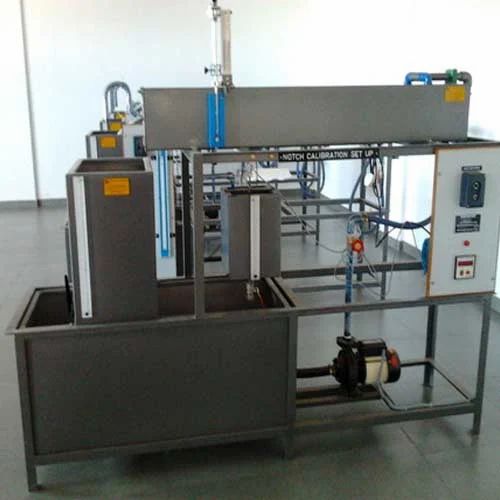Calibration of a notch is a concept that blends precision engineering with practical application in the realm of hydraulic machinery and fluid dynamics. To appreciate the intricacies of notch calibration, one must first understand the metaphorical significance of a notch itself: it is a simple yet profound embodiment of measurement, precision, and control. A notch serves as both a physical and conceptual gateway, through which fluid behaves in a predictable fashion, allowing for the careful calibration of systems designed to manage pressures, flows, and forces.
At its core, notch calibration refers to the meticulous process of adjusting and validating the dimensions and contours of a notch, ensuring that it provides consistent, repeatable measurements in hydraulic applications. This calibration process is akin to tuning a musical instrument—each adjustment brings the orchestra closer to harmony. Just as each string must be calibrated for optimal sound, a notch must be calibrated for accurate flow measurement, providing essential data for engineers and technicians alike.
The implementation of a notch in fluid dynamics is typically characterized by its cross-sectional shape, often a triangular or rectangular interference designed to regulate fluid discharge rates. This design choice is paramount; a notched weir, for instance, operates on the principle of energy conservation. The fluid’s gravitational potential energy is transformed into kinetic energy as it flows over the notch’s edge, thereby releasing data critical for hydraulic calculations.
Understanding the significance of this transformation, we delve into the parameters that affect notch performance. Key variables include the notch geometry, the fluid’s density, the gravitational force, and the throat area of the notch, which collectively dictate the hydraulic head—the height of fluid above the notch. As with a musician adjusting their pitch, engineers must recalibrate notches to account for changes in these parameters, ensuring the precise flow measurement that is vital for functioning systems.
The calibration process typically involves a series of experimental methods, which can include the use of precisely calibrated tanks or flumes. The flow over the notch is meticulously measured under controlled conditions, allowing technicians to derive the coefficient of discharge (Cd), a dimensionless number that represents the ratio of actual flow to theoretical flow. This coefficient serves as a critical metric in predicting flow rates, enabling engineers to design systems with confidence and accuracy.
Additionally, as systems age and environmental factors shift, recalibration becomes an imperative task, safeguarding the system’s integrity and efficacy. Environmental factors such as sediment deposition, corrosion, or localized obstructions can introduce complications that may skew measurements. Thus, maintaining an accurate calibration ensures that these variables are accounted for and operational efficiency is sustained.
Moreover, advances in technology play a pivotal role in the fractal spread of precision concerning notch calibration. The advent of digital flow measurement instruments allows for instantaneous readings and real-time data analysis, which can enhance the calibration process. Sophisticated software tools offer enhancements such as interactive data visualization, whether through 3D modeling of flow patterns or providing advanced simulation environments to predict flow behaviors more accurately than ever before.
The appeal of notch calibration stretches beyond mere precision; it encapsulates a broader narrative about the relationship between measurement and control in engineering practices. In a world where the margins for error are becoming infinitesimally small, mastery over calibration processes becomes vital. The meticulous calibration of notches transforms them into powerful instruments of efficiency, allowing hydraulic systems not merely to function but to perform with unparalleled finesse.
Furthermore, the calibration of a notch can also be viewed through the lens of sustainability. In an era where resource management becomes critical, accurately calibrated hydraulic systems can lead to significant reductions in waste and improved water management practices. Whether in irrigation systems that deliver water to crops or in industrial applications that require precise fluid containment, properly calibrated notches play an essential role in optimizing fluid usage. This not only serves practical needs but reflects a commitment to environmental stewardship.
In synthesis, the calibration of a notch is far more than a technical requisite; it embodies a thoughtful intersection of mathematics, physics, and craftsmanship. The meticulous calibration process transforms the simple notch into a conduit of knowledge, enhancing our ability to make sense of complex fluid dynamics. It serves as a reminder of the importance of precision in engineering and the broader implications it has in our pursuit of efficiency, sustainability, and control over our physical environments.
In conclusion, understanding the nuances of notch calibration unlocks a deeper appreciation for the intricate dance of fluid dynamics. The calibration process requires not just technical acumen but also an appreciation for the mathematical elegance behind the flow. In the grand symphony of engineering, the notch and its calibration play a critical role in ensuring that harmony prevails, enabling us to navigate the complexities of fluid behavior with confidence and precision.










